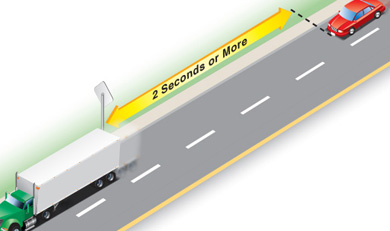Conquer the Highway Section of Your G Test: Everything You Need to Know

Passing your G driving test in Ontario is a major milestone, and one of the most challenging components is the highway portion of the test. In this guide, we'll walk you through everything you need to know to master highway driving, boost your confidence, and increase your chances of success on test day.
Why the Highway Portion Matters
The G test is designed to assess your ability to safely handle real-world driving scenarios which includes merging onto a highway, maintaining speed, and executing safe lane changes. Failing to demonstrate confidence and competence on the highway can result in an automatic fail.
1. Understand Highway Speed and Flow
One of the first things your examiner will look for during the highway portion of your G driving test is how well you adapt to the speed and flow of traffic.
Focus on the following key actions:
-
Accelerate quickly and safely when entering the highway to match the flow of traffic.
-
Maintain the posted speed limit, usually between 90–100 km/h on Ontario highways. Driving significantly below the limit can be seen as unsafe.
-
Avoid unnecessary braking or hesitation, as it can disrupt traffic flow and signal a lack of confidence.
Staying in sync with traffic is crucial not just for passing your test but for your safety and of others on the highway.

2. Practice Smooth Merging
Merging onto the highway is one of the most critical skills evaluated during the G test. It's not just about getting on the highway—it's about doing so confidently, safely, and without disrupting traffic flow.
Focus on these key techniques:
- Use your mirrors to assess traffic flow on the highway.
- Check your blind spots before making your move.
- Time your entry so you can merge smoothly without forcing other drivers to brake or swerve.
Pro Tip: Practice merging on Ontario's 400-series highways like the 401 or 427 during non-peak hours. This will help you gain confidence before your test day.
3. Keep a Safe Following Distance
Maintaining a safe following distance is essential for highway driving safety—and it's something your examiner will watch closely during your G test.
At higher speeds, you need more time to react. That's why the 2–3 second rule is the golden standard:
-
Choose a fixed point on the road (like a sign or pole). When the vehicle ahead passes it, count "one-thousand-one, one-thousand-two..."
-
If you reach that point before 2–3 seconds pass, you're following too closely.
Tailgating is one of the most dangerous habits on the highway. It shows poor judgment, increases your risk of a collision, and will likely cost you points or even a fail on your test. Practicing this consistently shows your examiner that you understand safe highway driving principles and are prepared for real-world conditions.
4. Master Lane Discipline and Awareness
Lane discipline is a major part of demonstrating safe, confident driving during the highway portion of the G test. Staying in the correct lane and signaling clearly can make the difference between a pass and a fail.
Here's what to focus on:
-
Stay in the right-hand lane unless you're overtaking slower traffic. Driving in the passing lane without cause can be marked against you.
-
Anticipate exits early by reading signs in advance, so you're not making last-minute lane changes.
-
Always signal well before lane changes or exits, and check your mirrors and blind spots before moving over.
Driving predictably is key not just for your test, but for long-term highway driving safety.
5. Execute Smooth and Safe Highway Exits
Knowing how to exit the highway properly is just as important as merging on. During your G test, examiners look for calm, controlled exits that don't disrupt traffic flow.
Here's how to do it right:
-
Plan your exit early by watching for exit signs and positioning yourself in the correct lane in advance.
-
Signal well ahead of time, then check your mirrors and blind spots before moving into the exit lane.
-
Do not slow down on the highway itself. Begin decelerating only after you've safely entered the off-ramp.
Sudden braking or late lane changes are red flags during the exam and can signal poor decision-making or lack of preparation.
Common Mistakes to Avoid
-
Driving too slowly on the on-ramp
-
Failing to shoulder check before merging
-
Hesitating during lane changes
-
Not matching highway speed
-
Braking abruptly
Frequently Asked Questions (FAQs)
Do I have to go on a 400-series highway during my G test?
Yes, in most test locations, you'll be required to drive on a 400-series highway such as the 401, 403, or 427. Some exceptions may apply depending on your location or traffic conditions.
How fast should I drive on the highway during my G test?
You should maintain the posted speed limit, typically 90–100 km/h, and adjust your speed appropriately with traffic flow—without going too slow or exceeding the limit.
Will I fail the G test if I hesitate while merging?
Possibly. Hesitation during merging can signal a lack of confidence or poor timing, which may result in points being deducted or even an automatic fail depending on severity.
How far in advance should I signal before changing lanes or exiting?
Signal at least 100 metres before your intended lane change or exit. Always check mirrors and blind spots to ensure it's safe to move.
Need a test-ready vehicle for your G test? Book with Elan for a fully insured, highway-ready car that meets all DriveTest requirements.
Pass Your Road Test with Confidence
Book your road test car and instructor package with Elan. Professional vehicles, experienced instructors, and free lesson perks available.
98% pass rate with our instructor packages



